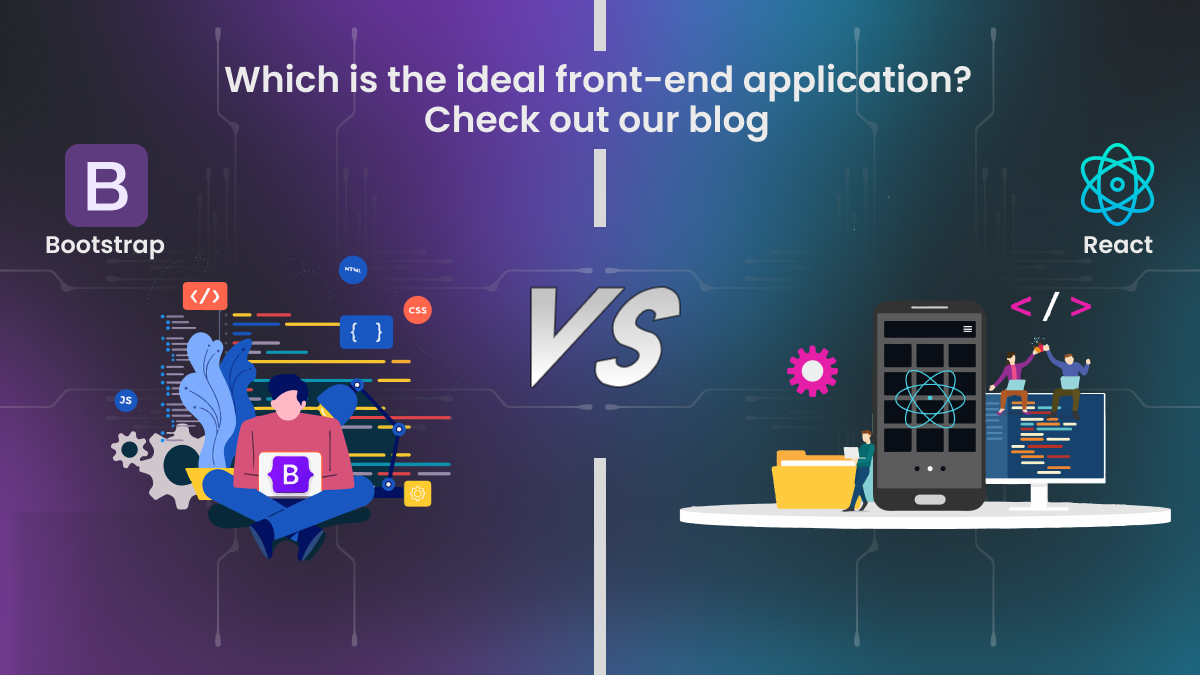In the rapidly advancing landscape of web and mobile app development, React has become a leading force in front-end development. Whether you’re a developer, business owner, or someone interested in web technologies, React has established itself as the preferred choice for building modern, high-performance applications.
- A Robust and Active Community
React boasts a large, vibrant, and engaged community. With strong backing from Facebook and contributions from developers worldwide, React has evolved into a powerful tool in the development world. The thriving ecosystem of libraries, frameworks, and resources ensures that developers have access to the necessary tools and support to succeed.
- Simplicity and Easy Adoption
React has a relatively low learning curve, especially when compared to other frameworks. Built with JavaScript—the most popular and widely-used programming language—React is easy for developers to pick up, particularly if they already have experience with JavaScript. Its component-based structure simplifies the process of breaking down complex user interfaces into smaller, more manageable sections, making development more intuitive and efficient.
- Modular Component-Based Structure
A major reason for React’s widespread popularity is its component-based architecture. This approach allows developers to create reusable UI components, which can be used across different parts of an application. Rather than building the user interface from the ground up each time, developers can craft components once and integrate them as needed. This not only increases productivity but also results in more maintainable, scalable, and efficient code.
- Enhanced Performance with Virtual DOM
React’s Virtual DOM provides a major performance enhancement. It acts as a lightweight copy of the real DOM, allowing React to efficiently update the user interface. By re-rendering only, the components that need updating, React minimizes unnecessary changes, ensuring high performance even in complex, data-driven applications. This makes React perfect for dynamic applications, such as e-commerce platforms or social media sites, that need frequent, real-time updates.
- Robust Ecosystem with React Native
React Native brings the power of React to mobile app development, allowing developers to create native apps for both iOS and Android with a single codebase. This approach speeds up development and lowers costs. Consequently, numerous React Native app development companies have adopted this technology to deliver smooth, cross-platform mobile experiences that work seamlessly across different devices and operating systems.
- Seamless Integration Flexibility
React offers exceptional flexibility, allowing it to be easily integrated with other frameworks and libraries. This makes it a great choice for both new and legacy applications. Whether you’re building a simple project or a complex enterprise-level solution, React can seamlessly work with other tools like Redux for state management or additional libraries for routing. This adaptability gives developers the freedom to select the best tools and technologies to suit their specific project needs.
- SEO Optimization Capabilities
Search engine optimization (SEO) is vital for the success of any web application, and React excels in this area. By supporting server-side rendering (SSR), React enables the creation of SEO-friendly applications. It renders the initial page on the server, ensuring that search engines can properly index the content of your app, which leads to improved visibility in search results. This is one of the key reasons why React JS development services are highly sought after by businesses looking to enhance their online presence.
- Solid Backing from Industry Giants
React was created and is maintained by Facebook, lending it a strong foundation of stability and trust. This support from a tech powerhouse ensures React’s continued relevance and innovation. Additionally, major companies like Instagram, WhatsApp, and Airbnb rely on React, further solidifying its credibility. Regular updates and enhancements from Facebook guarantee that React will remain at the forefront of web development technologies for the foreseeable future.
- Dynamic User Interfaces with JSX
React’s use of JSX (JavaScript XML) enables developers to write HTML-like syntax directly within JavaScript, streamlining the development process. This approach not only makes the coding more intuitive but also helps visualize the UI component structure more clearly. By combining UI logic with HTML rendering in one place, JSX simplifies the creation of rich, interactive user interfaces, allowing developers to build applications more efficiently.
- Powerful Developer Tools
React offers a suite of powerful developer tools, including the React Developer Tools extension for Chrome and Firefox. These tools make it easy for developers to inspect and debug React applications. Additionally, utilities like Create React App streamline the process of setting up and configuring a new React project, allowing developers to jump in quickly without having to deal with complex configurations. These tools enhance productivity and make React development more efficient.
Why Choose React JS for Front-End App Development?
React is a top choice for front-end app development, offering flexibility, performance, and ease of use. Whether building dynamic websites, web apps, or mobile apps, its reusable components, fast rendering with the virtual DOM, and strong community support make it a reliable option for React JS web development companies like Technogiq IT Solutions.
For mobile app development, React Native development services allow businesses to create high-performance apps for both iOS and Android with a unified codebase, resulting in faster development and cost savings.
Concluding Words
In conclusion, React’s efficiency, flexibility, and strong ecosystem make it a dominant force in front-end development. Whether for web or mobile apps, React offers powerful tools for developers. Choosing React JS for your next project ensures success and keeps you competitive in the ever-evolving tech landscape.



